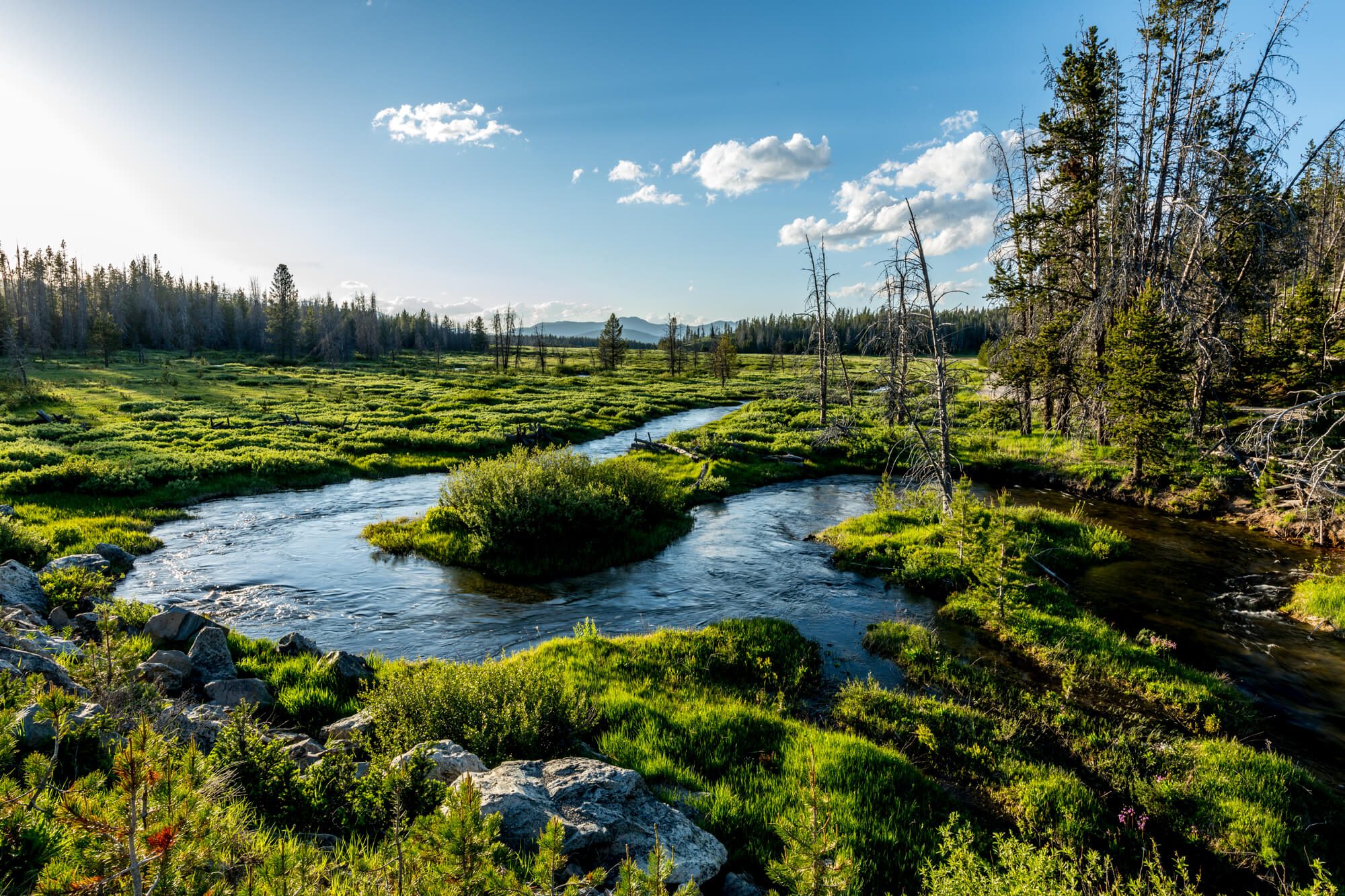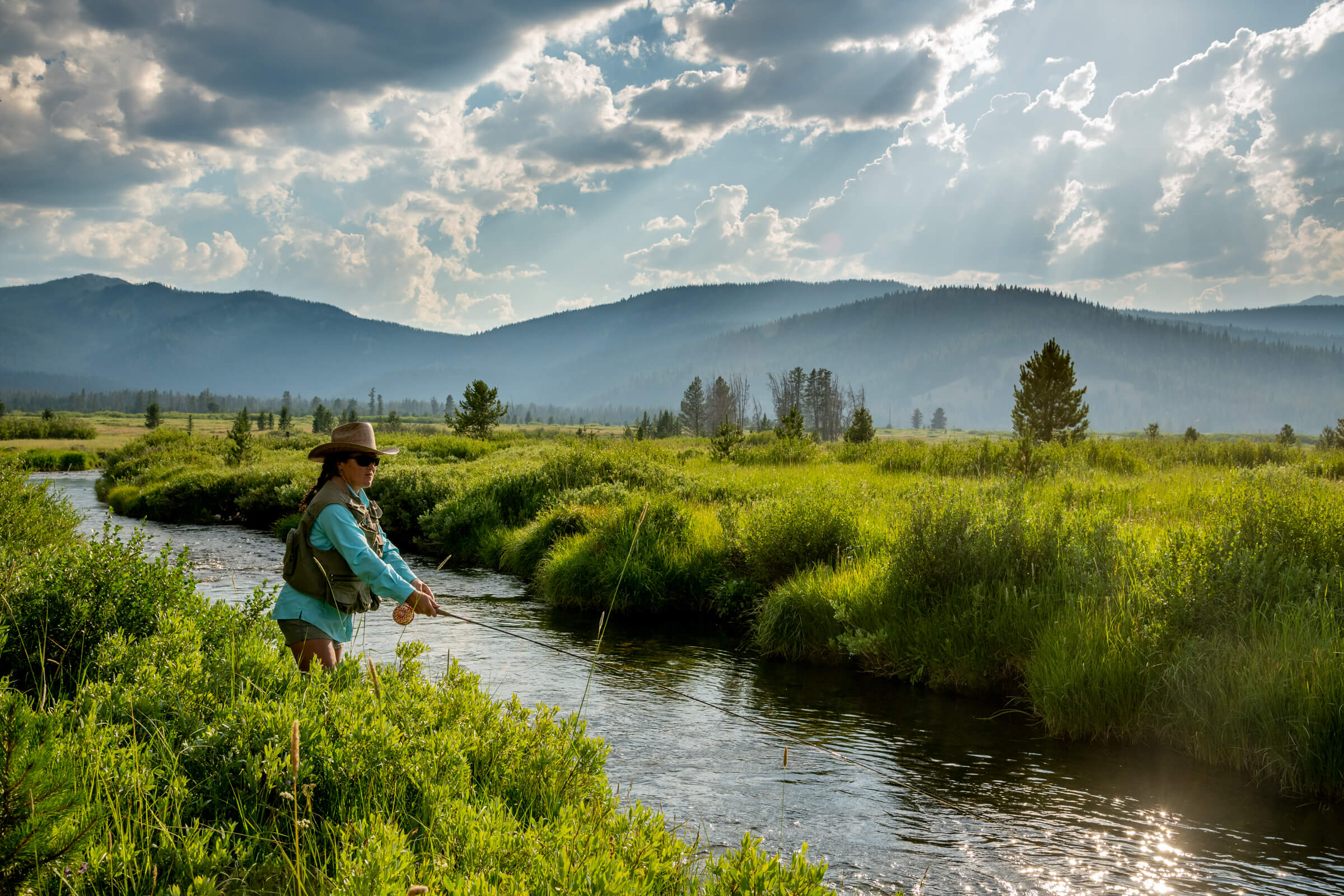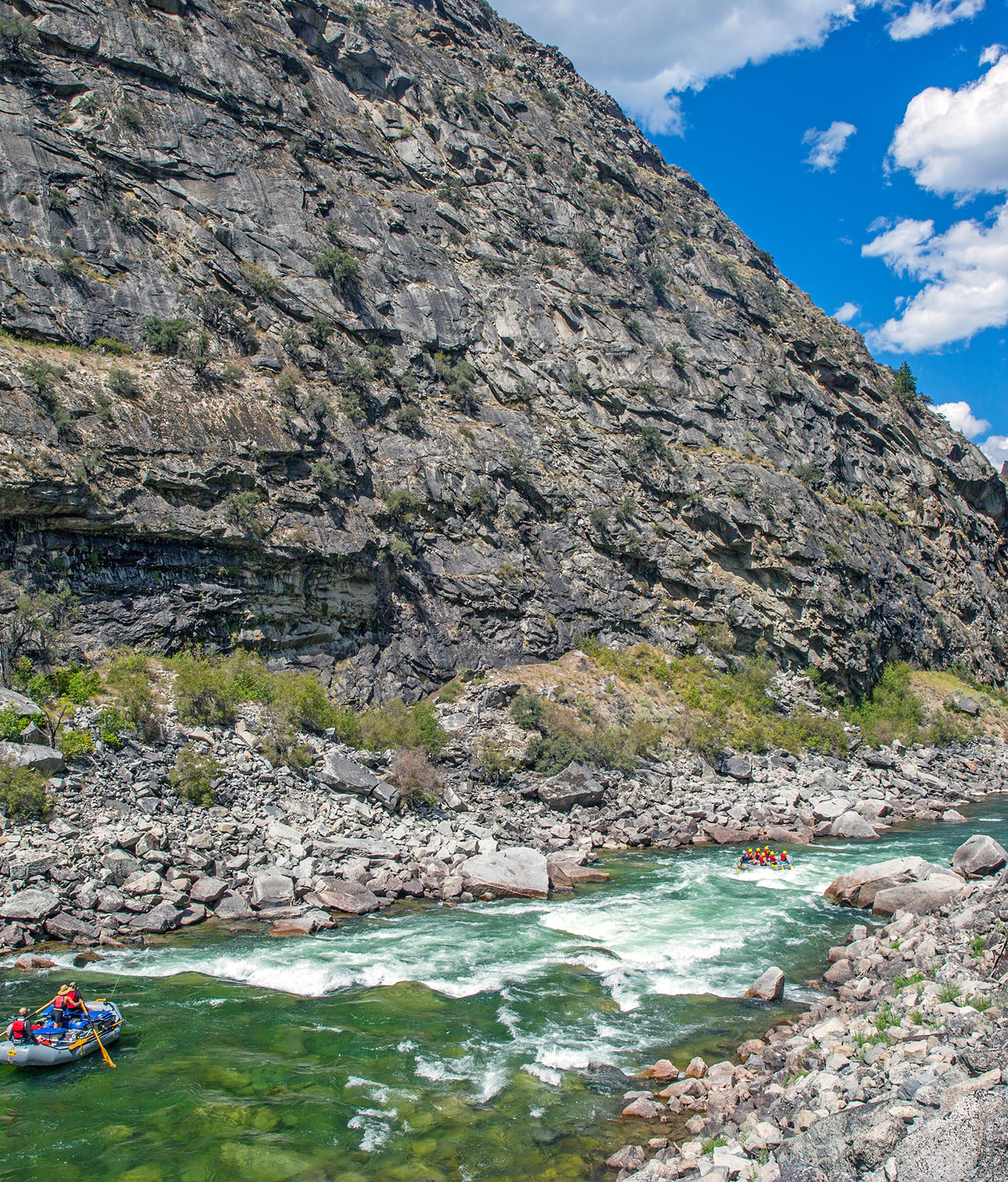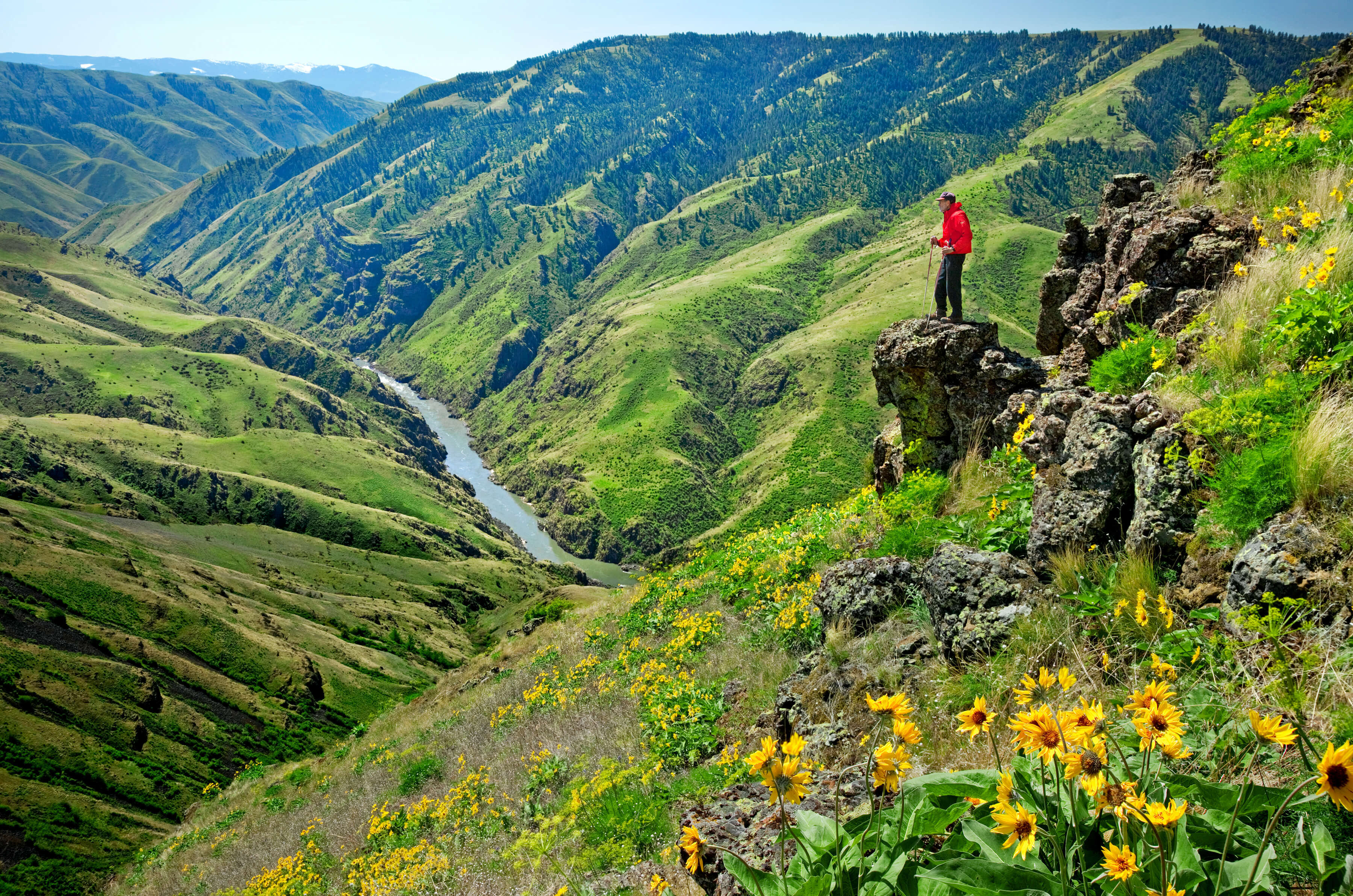Northwest of Stanley, Idaho, Western Rivers Conservancy has conserved a series of montane wetlands and critically important salmon streams at the very headwaters of Idaho’s Middle Fork Salmon River. In summer 2018, we purchased the Cape Horn Ranch, a 158-acre property in a spectacular setting between the Sawtooth and Frank Church/River of No Return wilderness areas. In fall 2019, we transferred the property to the Salmon-Challis National Forest. Conservation of these lands will have an outsized impact on imperiled fish and enhance recreational access in a stunning area of the Rockies.
Cape Horn Ranch controls senior water rights on a stream called Knapp Creek, which flows through the eastern corner of the ranch before entering Marsh Creek. Downstream of the ranch, Marsh Creek meets Bear Valley Creek, and their confluence marks the beginning of the Middle Fork Salmon, one of the most isolated, pristine and storied rivers in the country. The salmon and steelhead that make their way up the Middle Fork and arrive Marsh Creek must journey over 900 miles to get here, in one of longest anadromous journeys on Earth.
The water right controlled by the Cape Horn Ranch currently diverts up to 75 percent of Knapp Creek’s flow during irrigation season, the same time of year salmon are returning to Knapp and Marsh creeks to spawn. By acquiring the ranch, along with its senior water right, and then partnering with the Idaho Water Resource Board, WRC returned these critically needed flows to Knapp Creek, breathing new life into these vital streams.
In addition to improving flows in Knapp and Marsh creeks, WRC’s efforts preserved a half mile of Knapp Creek itself, along with portions of Asher Creek, another Marsh Creek tributary. All three streams support federally listed Chinook salmon, steelhead and bull trout, while Knapp and Marsh Creeks are designated critical habitat for Snake River Chinook and steelhead.
The project preserves excellent wildlife habitat within a landscape of riparian, wetland, sagebrush and mixed conifer vegetation. The Cape Horn region contains one of the largest undeveloped wet-meadow complexes in the upper Salmon River basin, and the braided creek channels and wet-meadows of Marsh and Knapp creeks support diverse waterfowl, including one of the basin’s highest nesting densities of sandhill cranes. The area is also important for calving elk, mule deer and American pronghorn.
WRC also improved recreation opportunities for hikers, cross-country skiers and other recreationists. The property controls local access to two roads and to the Cape Horn Guard Station, which is used as a base for fire fighting in summer and a cabin rental in winter. We transferred the water rights to the IWRB, replicating our recent successful effort to return water to another Salmon River tributary south of Stanley, at the edge of the Sawtooth Wilderness Area.










